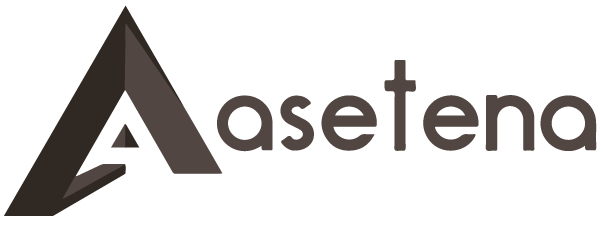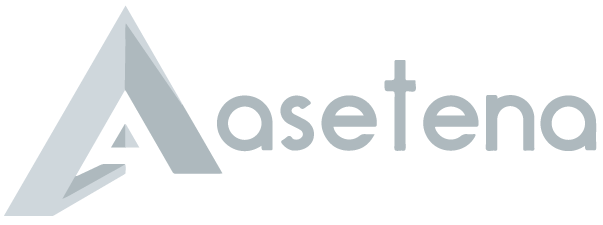Top roofing styles for houses in Ghana

When building or renovating a home in Ghana, choosing the right roofing style can make all the difference in achieving the desired look and functionality. From traditional thatched roofs to more modern corrugated metal sheets, there are a variety of roofing options to choose from. This article will explore the top roofing styles for houses in Ghana, including the advantages and disadvantages of each option.
What is a roofing style
A roofing style is the shape and design of the roof of a house or other building. Different styles can be used to create different effects, as well as to provide protection from the elements. In Ghana, there are several popular roofing styles that are often seen on homes. These include the gable, flat, and hip, etc.
Why should I consider a roofing style when buying one for my house?
Choosing the right roofing style for your house is an important decision as it will not only affect the overall aesthetics of your house but also the safety, durability and energy efficiency. The right roofing style can also add to the value of your home.
The right style and materials chosen can add years of life to your roof, reduce the need for repairs and increase the resale value of your property. It is important to choose the right roofing style for your home in order to ensure that it stands the test of time, and protects you and your family from the elements.
Top 8 Roofing styles for houses in Ghana
1. Hip roof
A hip roof is a roofing style with four sides that all have the same slope, coming together at the top to form a ridge. The roof sides extend all the way down to the edge of the building, giving it a unique look and providing extra insulation for the structure. This style is also quite durable and can stand up to extreme weather conditions, making it a popular choice for homes in Ghana.
Advantages
- Hip roofs are very stable compared to other roof types due to their four side slope.
- Water flows easily down the slope toward the rain gutter with a low risk for moisture damage or leakages.
- Each bottom of the roof can hold a gutter, which allows rainwater to be channelled away from your property into the desired draining site.
- It allows for the use of a variety of roofing materials due its angles.
Disadvantages
- They can be expensive to install compared to other roof types because it requires more building materials.
- They can be difficult to build and are not flexible to incorporate ventilation.
- It is harder to install ventilation because of the equal nature of each slope. If the streamlined profile of the structure is tampered with, it could affect the rest of the structure.
2. Hip and Valley roof
This style consists of a combination of both hip and valley roofs, creating an aesthetically pleasing look and allowing for plenty of ventilation. It is often used in places where it is necessary to provide shade or protection from the sun, as the angles of the roof can be adjusted to block out sunlight.
- Advertisement -
The hip and valley roof is great for larger buildings, as the high slope creates enough space for two stories. It also helps to protect against strong winds and bad weather, making it ideal for areas with harsh climates. The construction process of this type of roof is relatively easy and cost-effective, making it a popular choice among homeowners.
Advantages
- It improves roof and property lifespan by channelling all rainwater straight to gutters with unblocked and efficient downspouts.
- The multiple corners allow builders to install multiple downspouts for maximum rainwater management efficiency.
- It introduces a spacious attic or as others would prefer, a high-headroom and the generous width allows the installation of dormer nests which adds to the beauty of the building and improves ventilation.
Disadvantage
- Hip and Valley roofs can be prone to leakages if additional designs like a crow nest or dormer are incorporated but are not properly fitted with correct valleys and flashings.
3. Gable roof
A gable roof is a type of roof design characterized by two sloping sides that meet in the middle, forming an inverted “V” shape. This style of roofing is one of the most popular in Ghana due to its simple and cost-effective construction. The slope of the gable roof can vary depending on the size of the house and climate. Gable roofs provide excellent ventilation, allowing air to flow freely, while also providing good protection from rain and snow.
Advantages
- They are simple to design and build. They require a very simple construction method compared to other roof types.
- The A shape or triangular design of the roof provides more space that can serve as an additional attic space as well as provide better ventilation in the property.
- The angled pitch means that rainwater can easily run off the roof which minimizes the risk of leaks and in turn, ensures that the roof can remain damage-free and last longer.
- They are less expensive. Since a gabled roof is easier to build than other complex roofing alternatives, the overall costs of building and installation are comparatively lower.
Disadvantages
- They are not suitable for buildings in high windy areas. High winds can cause roofing sheets to peel or rip off and if the trusses are not properly engineered and constructed, the roofs can collapse.
4. Flat roof
A flat roof is often used on residential homes and can provide an economical choice for the homeowner. Flat roofs are usually constructed using a single layer of material, such as asphalt or concrete, that is placed over a structure’s framework. The flat roof is known for its easy installation and maintenance and is often the least expensive option when it comes to roofing styles. The primary benefit of a flat roof is that it provides an effective barrier against the elements, including rain, snow, and wind.
Advantages
- The most obvious advantage for a flat roof is the cost compared to the other roofing types.
- It is simple to construct and maintain, it’s labour is quite cheap as there is less to no risk during installation.
- It saves time. Due to its simplicity, installing a flat roof does not take as much time as the others.
- In the event that the building needs to be re-roofed in the future, installation can be done within 24hours.
- Flat roofs allow the use of many different roofing materials and depending on the type of material you use, it allows for outdoor usable space.
- It makes interior space more versatile. If properly built, it is easier to construct an additional floor or an attic without damaging the existing roof.
Disadvantages
- They are susceptible to water leakages. Due to how low the slope is, flat roofs do not allow rainwater to flow down as efficiently as pitched roofs do.
- They have a limited lifespan. Some of the materials used for installation come with a lifespan of 10 to 15years and also, the stability of the roof decreases as the area of the roof increases.
5. Pent roof
A pent roof is a very simple and economical roofing style that features a single-sloped roof. It is often used as a lean-to type of roof, which is why it’s also sometimes referred to as a lean-to roof. This roofing style is typically used for smaller structures such as garden sheds, garages, and other outbuildings.
A pent roof has a single-slope and is easy to construct and cost-effective. The roof structure can be made from a variety of materials including corrugated metal, asphalt shingles, wood shakes, clay tiles, or other materials.
Advantages
- It allows for the installation of PV solar panels, which naturally increase the energy efficiency of the home.
- It is one of the simplest, affordable, and easily designed roofs and works great by easily directing rainwater from the roof due to its steep pitch.
- It is considered a type of roof contemporary, giving its high aesthetic appeal compared to other roof types and lasts longer than a standard flat roof.
Disadvantages
- Skillion roofs emerge at a constricted angle from the walls and ceilings of the property. As a result, space is limited and offers less room for a ceiling space or an attic.
- Although it has a steep pitch which makes it conducive in the rainy season, it is not a suitable choice for windy areas.
6. Combination roof
A combination roof is a combination of different types of roofs, which can include a gable, hip, and flat roof design. It is the most complex of all the roofing styles, as it requires a great amount of skill to build. It is also the most expensive of all the roofing styles in Ghana. Combination roofs offer greater flexibility and aesthetic appeal than other roofing styles, as they allow for more creative design elements such as multiple levels, asymmetrical features, and different shapes.
Advantages
- It works best in all environments once it is properly designed, engineered, and constructed.
- It allows the construction of Dormers, Solar Panels, Attics, etc.
- It is visually appealing due to its uniqueness.
Disadvantages
- The biggest risk of combination roofs is creating unnecessary end-walls and valleys where leaks can occur.
- They can be more expensive than single designed roofs and if not properly designed, combination roofs can end up more like an eyesore than appealing.
7. Curved roof
A curved roof is an eye-catching and unique style of roof that can add a beautiful aesthetic to any home. It is a type of hip roof with its sides having a gentle curvature, rather than the typical angular lines. This kind of roof is more complex and expensive to build compared to other types of roofs due to the specialized materials and labor involved in its construction. Curved roofs also require careful engineering and design to ensure it is structurally sound and able to withstand the elements.
Advantages
- They have a unique design
- It can be customized to the region the home is being built.
- They can be used to cover an entire or section of a home
Disadvantage
- The cost depends on the complexity of the design.
8. Pyramid roof
A pyramid roof is a type of roof style in which the sides of the roof meet at the peak. This roof style is typically used in more tropical climates because it allows for maximum air circulation and heat dissipation. The roof slopes outward from all sides, creating an inverted pyramid shape. This roof style is particularly effective in preventing the accumulation of heat in the attic space during hot weather.
Advantages
- It provides extra space for shade and ventilation
- It is resistant to strong winds
Disadvantage
- The cost can be higher due to the complexity of the design
Conclusion
When considering the top roofing styles for your home in Ghana, there are many options to choose from. Each of these roof styles have their own advantages and disadvantages depending on your climate, budget, and other preferences. It is important to do your research and consider all of your options before making a decision on the best roofing style for your home. With careful consideration, you can find the perfect roof for your home that will keep you safe and dry for many years to come.


